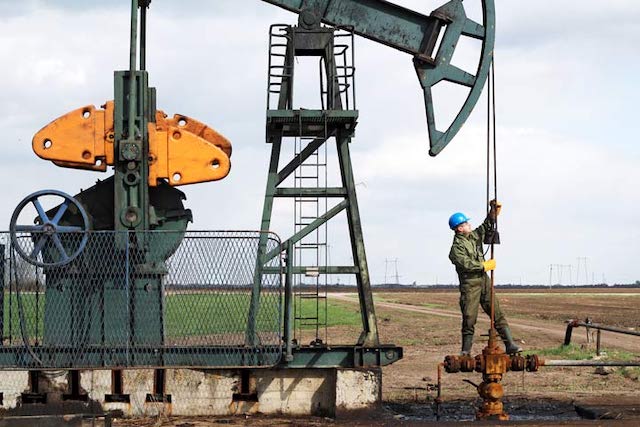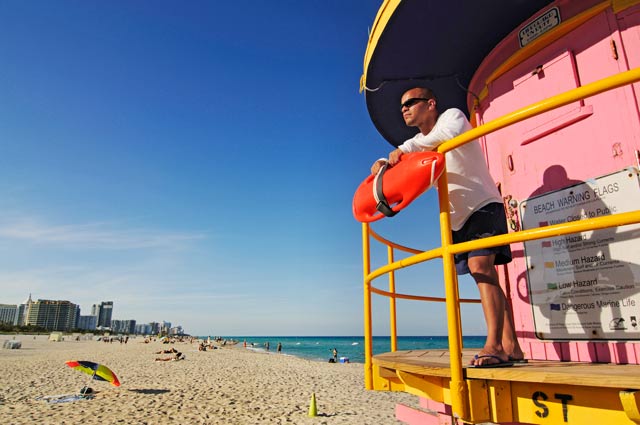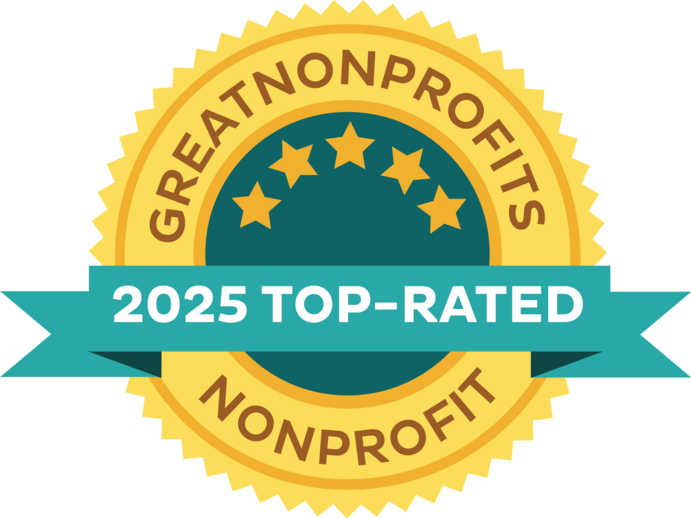Healthy Harvest, Unhealthy Exposure. Don't let clouds, fog or cool temperatures fool you. The sun's ultraviolet rays can still damage your skin, and workers need protection every day. Photo: Rob Howard.
If you earn your living outdoors, your sun exposure and risk of skin cancer skyrocket. Our Houston-based experts offer tips on how to save your skin.
By KEYAN MATINPOUR, MD, CHETAN VEDVYAS, MD, AND LEONARD H. GOLDBERG, MD
Every week in our practice, we treat dozens of patients who have basal and squamous cell carcinomas, the two most common types of skin cancer. During surgical procedures to remove these nonmelanoma skin cancers, we often have great conversations with our patients. Wherever the conversations start, they tend to drift to the same topic: How did this person end up in the operating chair?
Sometimes, the most obvious answer is that they have spent their lives working outdoors, in professions such as farming or construction where they can’t avoid the sun. More than 5.4 million cases of skin cancer are treated in the U.S. each year, and over 90 percent of the time, the sun’s ultraviolet (UV) radiation is the culprit. So, we give them simple and effective tips to reduce sun exposure and its impact on their skin.
CLOTHING
When UV exposure at work is unavoidable, protective clothing is key. One of our patients, for example, was an oil and gas consultant who wore his short-sleeved company polo shirt into the field every day. He routinely developed multiple precancerous skin lesions, called actinic keratoses, on his hands, forearms and face. By adding a hat and long-sleeved shirt, however, he has significantly reduced his incidence of sunburns. His skin exams since then have shown improvement.
Some workers wear a long-sleeved shirt open over a T-shirt for more air flow. A high-collared shirt adds protection for the back of the neck. Tightly woven fabrics provide more protection than loosely woven threads, and certain fabrics such as wool, unbleached cotton, polyester and denim are far more protective than bleached cottons and linens. While white might seem cool and reflective, bright and dark colors protect you better because the dyes absorb UV rays.

Protective Gear. This oil worker is well protected, except his hard hat leaves his ears and face exposed. A water-resistant sunscreen stick will fit in a pocket.
SHADE
For our patients who work in construction, we’ve advised using a covered area for tool and equipment preparation, meals and meetings. After we suggested this to one of our patients who works as a contractor, he built worksite tents to provide his employees with shade. This has reduced their daily direct sun exposure significantly.
In landscaping and construction, it may be possible to assess the patterns of sun and shade over the course of a day and lower overall sun exposure by working on the western side of buildings, objects or trees in the morning and the eastern sides in the afternoon.
If you’re at high risk for skin cancer or have had it before, you may be able to adjust your work hours to start earlier or work into the early evening.
HATS
When you work in the sun, any kind of hat is better than nothing, but brimless caps may leave your ears, neck or parts of your face exposed. A wide-brimmed or foreign legion-style hat (with extra material that covers the ears and neck) is much better. A tightly woven canvas hat offers more protection than, say, a loosely woven straw hat. If you have to wear a hard hat or only have a billed cap, you can wear a bandana under it with the fabric hanging down to help protect your neck and ears. Regular cotton may not protect you very well, but many retailers sell bandanas rated with an ultraviolet protection factor (UPF) of 50+. The Skin Cancer Foundation recommends UPFs of 30 or higher, which allow only 1/30th of the sun’s rays to reach the skin.
SUNGLASSES
UV exposure can lead to skin cancers in the eyes and on the eyelids, as well as cataracts on the lens. Find sunglasses that fit well, and make sure they block 99 to 100 percent of UV rays. The larger the better, and wraparound styles protect the sides of the eye area better. Polarized lenses reduce glare from reflective surfaces like water, ice, roof tiles, asphalt, concrete and sand.

SUNSCREEN
For skin that you often can’t cover up, like your hands, neck and face, it’s important to use a broad-spectrum sunscreen with a sun protection factor (SPF) of at least 50 and reapply frequently throughout the day. If you have a sun sensitivity condition or a history of skin cancer, higher SPFs offer extra protection. Remember that when you sweat, you have to replenish your sunscreen (as well as drink more water to avoid dehydration or heat exhaustion). And if you work in water as a lifeguard or swim instructor, for example, remember to reapply sunscreen whenever you leave the water. Even if you use a water-resistant product, some of it will wash off in the water over time.
If you’re an outdoor worker, it’s extremely important to see a dermatologist every year for a skin cancer screening.
Some of our patients who work outdoors have complained that sunscreens drip into their eyes and sting or are difficult to apply. Water-resistant formulas labeled for the face may drip and sting less. You may want to try a formula for sensitive skin. We also recommend stick sunscreens. Sticks often come in small sizes you can keep in a pocket to reapply frequently after sweating or washing your hands. Many can also be used on your lips.
CRUCIAL FOLLOW-UP
If you’re an outdoor worker, it’s extremely important to see a dermatologist every year for a skin cancer screening. We can’t stress this enough. If you have health insurance, it may cover this simple, preventive exam that takes only a few minutes. Or, look for a free screening in your area.
For those who have had skin cancer in the past, or have a family history of the disease, we recommend even more frequent intervals (two to four times a year, depending on what your doctor says). We also educate our patients to be vigilant and perform skin self-exams head to toe (monthly if possible), then to contact their doctor if they found any new or changing lesions. Most skin cancers can be cured if detected early.
SCREENINGS AT WORK
We know how easy it is to avoid seeing a doctor. So we have worked with some of our patients to introduce free skin cancer screenings at their workplaces. These usually involve one of our physicians going to the workplace and providing a rapid skin exam in a private area. While our physicians don’t perform biopsies or provide prescriptions at these screenings, they can identify suspicious lesions and recommend an appointment with a dermatologist for further evaluation. Look for such events in your community, as they can be a quick, easy and affordable way to catch cancer early.
Keyan Matinpour, MD, is a dermatologist and a fellow in Mohs Micrographic Surgery and Dermatologic Oncology at DermSurgery Associates and Houston Methodist Hospital, both in Houston.
Chetan Vedvyas, MD, is a dermatologist and a fellow in Mohs Micrographic Surgery and Dermatologic Oncology at DermSurgery Associates and Houston Methodist Hospital, both in Houston.
Leonard H. Goldberg, MD, is a clinical professor of dermatology at Houston Methodist Hospital and Weill Medical College of Cornell University. He is a vice president of The Skin Cancer Foundation and a member of its Amonette Circle.

*This article was featured in The Skin Cancer Foundation Journal 2016.





